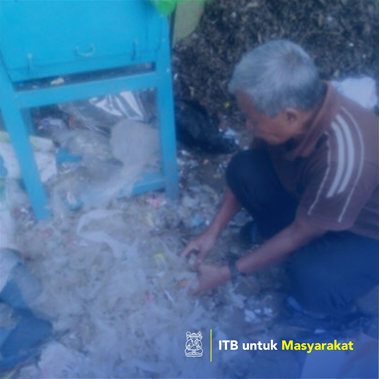

Oemar Handojo
Over time, the increase in population and changes in public consumption patterns caused an increase in the volume of waste generated by increasingly diverse waste characteristics. The increase in the amount of garbage produced is often not accompanied by the addition of waste management facilities and infrastructure as well as an adequate waste management system. The garbage management system approach in Indonesia is still on end-of-pipe, namely waste collected from the source, transported to the temporary collection site (TPS), and was disposed of to the Final Management Place (TPA). This led to the emergence of problems in the health aspects, environment, aesthetics, and costs. In an effort to solve this problem, the Bandung Institute of Technology (ITB) as a College through the ITB Research and Community Service Institute (LPPM) also developed a waste management system that can optimize efforts to limit waste generation, waste reurus, and / or re-use waste to reduce The burden of waste handling and integrating waste management activities since the source of waste generation. PLAY through the implementation of the Zero Waste Discharge system that focuses on efforts to sort of waste as early as possible from the source of garbage and re-decomposition of waste into a product that can be used again is expected to answer the existing problems. The scope of the program implementation begins with the preparation of the planned implementation of the Zero Waste Discharge Sitem by first carrying out the waste sampling activities to determine the conditions of ITB waste. The Zero Waste Discharge system focuses on garbage collection, sorting and transporting activities. Previously, a waste processing plan was compiled so that the amount of waste that needed to be processed at the Sarimukti TPA could decrease significantly. This activity involves the Environmental Engineering Student Association (HMTL) ITB, the U-Green ITB Student Activity Unit, and the Ministry of Community Service of the KM ITB Cabinet.
Application of appropriate technology
Over time, the increase in population and changes in public consumption patterns caused an increase in the volume of waste generated by increasingly diverse waste characteristics. The increase in the amount of garbage produced is often not accompanied by the addition of waste management facilities and infrastructure as well as an adequate waste management system.